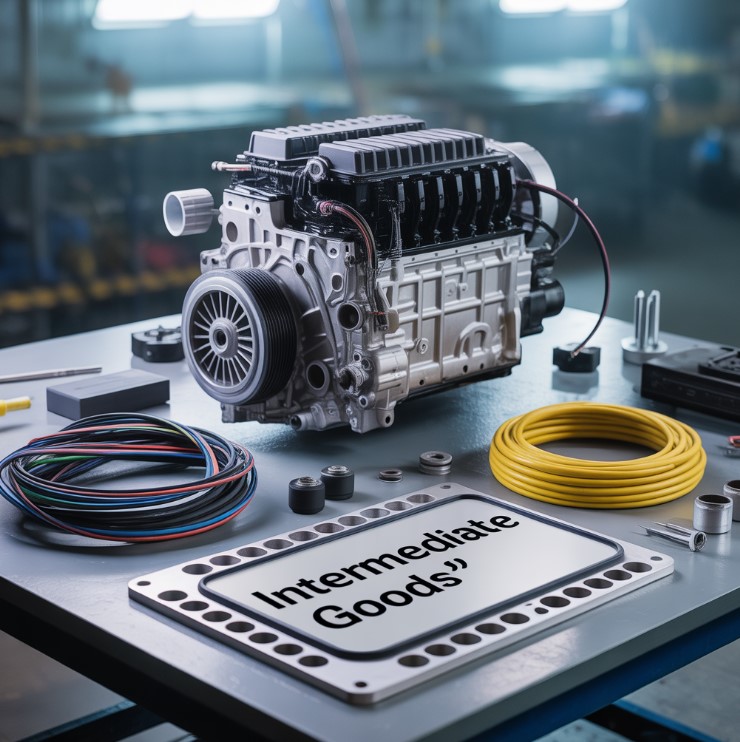Contents
This article explains how strategic investment in essential assets, known as capital goods, drives a company’s innovation, production capacity, and competitive edge in the market.
The Strategic Value of Production Assets
I believe businesses see production assets as a simple necessity. This view suggests they are just a cost required to operate. However, a better perspective frames these assets as the core driver of a company’s success. The best companies use the strategic purchase and use of their equipment to outperform competitors. These assets don’t just enable operations; they define the company’s ability to compete and innovate. A company’s choice of machinery and infrastructure is a direct reflection of its long-term strategy and ambition.
Beyond the Balance Sheet: Assets as a Strategic Weapon
Accountants track a company’s long-term assets by depreciating their value over time on the balance sheet. This financial practice is necessary but overlooks the asset’s strategic importance. The true value of a piece of equipment is not its declining book value, but the unique capability it provides to the business.
Let’s consider a practical example. A standard pizza oven allows a pizzeria to make pizza. Now, imagine that pizzeria invests in a custom-built, state-of-the-art convection oven. This advanced oven cooks 50% faster, consumes less energy, and creates a perfectly consistent crust that customers love.
This oven is more than a tool; it’s a competitive weapon.
- Faster Cooking: Allows for higher customer turnover and more sales during peak hours.
- Energy Efficiency: Lowers the monthly utility bills, increasing profit margins.
- Superior Product: Creates a unique and defensible product that builds customer loyalty.
An accountant sees a $70,000 asset depreciating over 20 years. A strategist, however, sees a machine that improves profit margins and customer satisfaction every single day. Therefore, the selection of production equipment is a core strategic decision.
The Role of Assets in Driving Innovation
In our modern economy, the most important production assets are those that directly enable innovation. Capital goods are the durable, man-made assets that companies use to produce products or services. These items are not just for making existing products; they are critical for creating entirely new ones.
Consider these examples:
- Pharmaceuticals: A pharmaceutical company’s most vital equipment isn’t the large vats for mixing common medicines. It is the advanced gene-sequencing machines and robotic lab automation systems in its research and development (R&D) division, which are essential for discovering the next breakthrough drug.
- Technology: A tech company’s innovation relies on its server farms that run complex machine-learning models. Its proprietary software development kits (SDKs) are also key assets that allow it to build features that competitors cannot easily copy.
In this context, these advanced assets represent the physical form of a company’s intellectual property and its capacity to innovate. Investing in them is a direct investment in staying ahead of the competition.
From Investment to Advantage: A Simple Flow
Strategic Investment ➔ Advanced Equipment (e.g., 3D Printers, AI Servers) ➔ Increased Innovation (New Products, Better Services) ➔ Competitive Advantage (Market Leadership, Higher Profits)
The Shift from Physical to Digital Assets
The classic image of a major business asset is a factory, a fleet of delivery trucks, or a large piece of industrial machinery. While these physical items are still important, the most valuable assets for many modern companies are now intangible and digital.
Capital goods are long-lasting assets used to produce something of value, and this definition perfectly includes modern digital infrastructure. The “factory” for companies like Google or Netflix is their network of data centers, fiber-optic cables, and proprietary software algorithms. Uber’s most valuable asset is not the cars its drivers use, but its complex logistics and pricing software platform. This software is a production asset because it is a long-lasting tool used to deliver the company’s core service.
This shift changes business strategy. A physical factory has a limited production capacity. A software platform, in contrast, can be scaled to serve millions of new users at a very low marginal cost. This dynamic creates the “winner-take-all” markets we often see in the technology industry.
Comparing Physical and Digital Production Assets
| Feature | Physical Assets (e.g., Factory) | Digital Assets (e.g., Software Platform) |
|---|---|---|
| Nature | Tangible, physical presence | Intangible, exists as code and data |
| Wear and Tear | Suffers physical depreciation and requires maintenance | Becomes obsolete due to new technology; requires updates |
| Scalability | Limited by physical size and output | Highly scalable at near-zero marginal cost |
| Location | Geographically fixed | Globally accessible via the internet |
| Example | Automobile assembly line | A ride-sharing app’s algorithm |
Frequently Asked Questions (FAQ)
Q1: What is the main difference between capital goods and consumer goods?
A1: The main difference is their use. Capital goods, like a construction crane or a business server, are used to produce other goods or services. Consumer goods, like a television or a box of cereal, are purchased by consumers for their final use.
Q2: Is software considered a capital good?
A2: Yes, in modern business accounting and strategy, proprietary software is considered an intangible capital asset. It is a long-term tool that a company uses to produce a service or manage its operations, and its cost is often capitalized and amortized over time.
Q3: Why is investing in the right equipment so important?
A3: Investing in the right equipment is crucial because it directly creates a competitive advantage. The right assets can help a company operate more efficiently, produce a higher quality product, or innovate faster than its rivals, leading to greater market share and profitability.
Key Strategic Takeaways
To conclude, I want to summarize the main points about viewing these assets from a strategic perspective.
- Source of Advantage: View your company’s primary equipment as a source of competitive advantage, not merely a business cost.
- Investment in Innovation: Understand that an investment in new technology and machinery is a direct investment in your company’s future ability to create new products.
- The Rise of Digital: Recognize that for many industries, the most valuable production assets are now digital, such as software, data infrastructure, and proprietary algorithms.
- Beyond Accounting: Assess assets based on the competitive capabilities they provide, not just their depreciating value on a financial statement.





